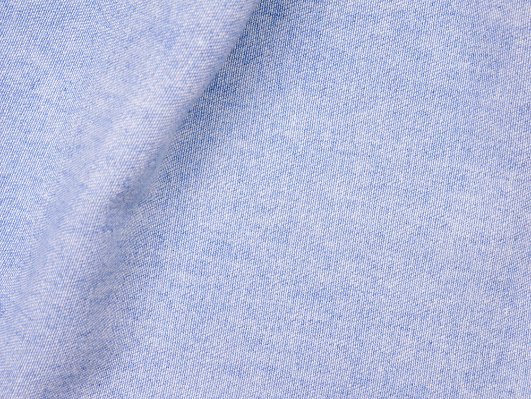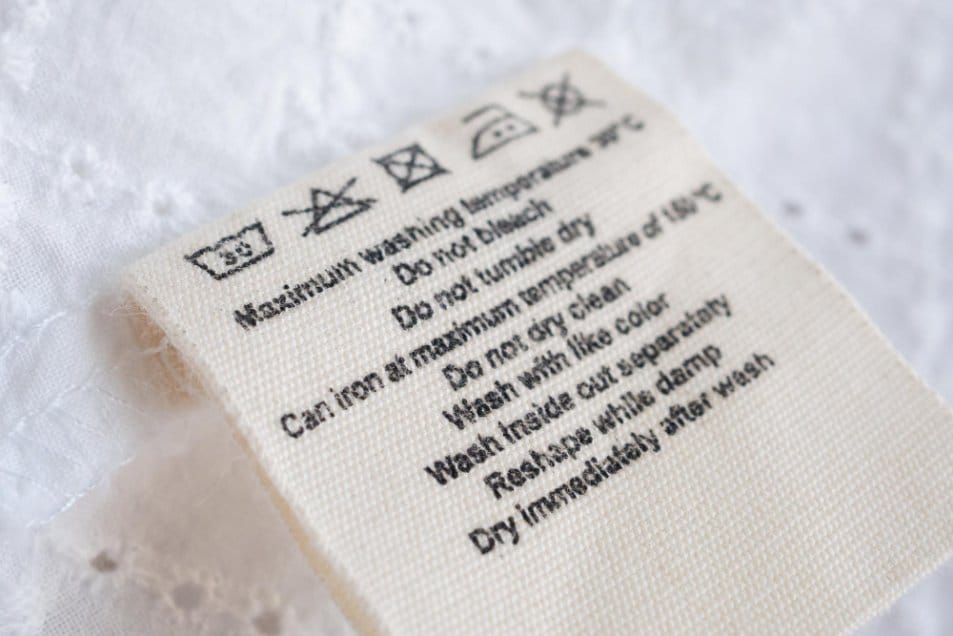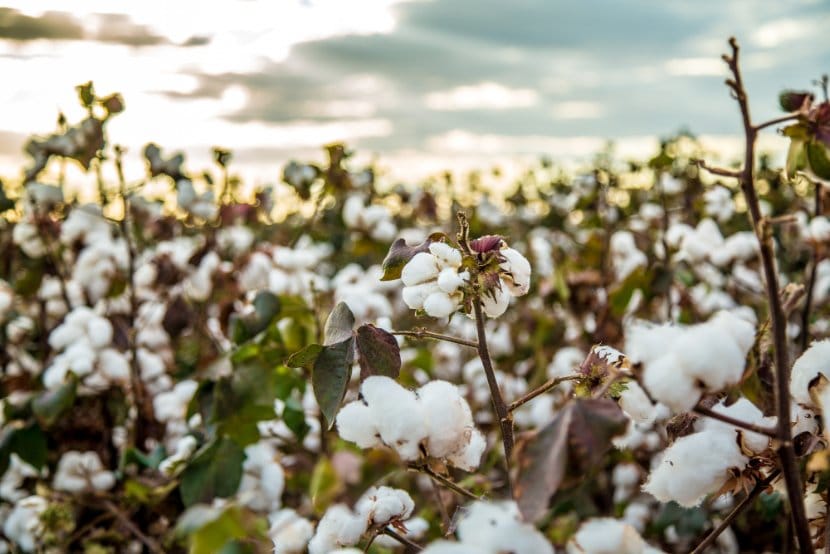Discover everything about this timeless, breathable fabric that bridges casual comfort with polished sophistication
Table of Contents
- What is Chambray Cotton?
- Historical Origins and Development
- Key Characteristics and Properties
- Chambray vs Other Fabrics
- Production Process and Manufacturing
- Quality and Comfort Benefits
- Complete Care Instructions
- Fashion and Design Applications
- Buying Guide and Quality Tips
- Environmental Impact and Sustainability
- Troubleshooting Common Issues
- Frequently Asked Questions
What is Chambray Cotton?
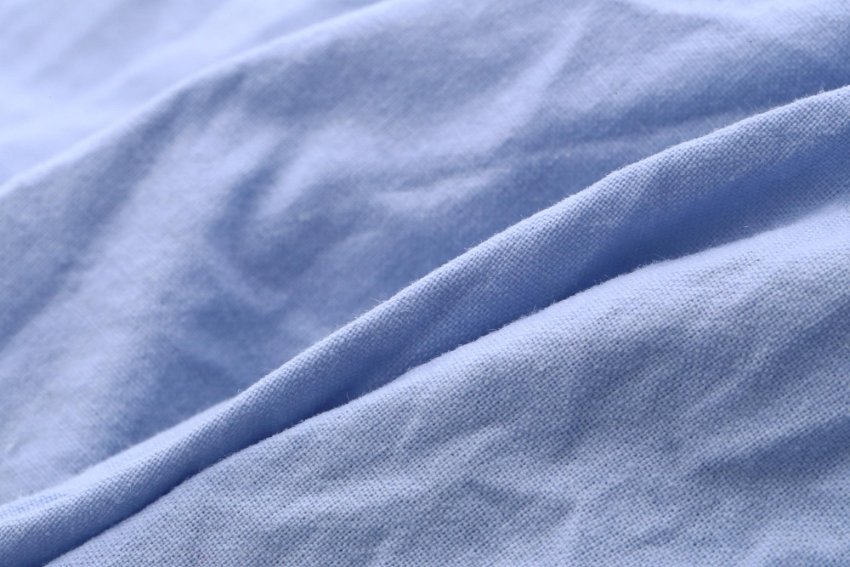
Chambray cotton is a lightweight, plain-weave fabric that combines colored warp threads (usually blue) with white weft threads, creating a distinctive two-tone appearance. This unique construction gives chambray its characteristic faded, vintage look while maintaining exceptional breathability and comfort.
Quick Definition: Chambray is a plain-weave cotton fabric featuring colored vertical threads and white horizontal threads, resulting in a soft, breathable material that’s lighter than denim but with a similar aesthetic appeal.
Is Chambray Natural?
Yes, chambray is typically made from 100% natural cotton fibers, though modern variations may include small amounts of linen, tencel, or polyester for specific performance characteristics. The natural cotton composition makes it biodegradable and environmentally friendly compared to fully synthetic alternatives.
Why is it Called Chambray?
The name “chambray” derives from the French city of Cambrai, where similar lightweight fabrics called “cambric” were produced in the 16th century. American textile manufacturers adopted and modified the term in the early 19th century to distinguish their cotton plain-weave fabrics from European linen cambrics.
Historical Origins and Development
Chambray’s story begins in medieval France, evolving from the prestigious cambric fabrics of Cambrai. This rich textile history shows how practical innovation shaped modern fabrics.
From Cambric to Modern Chambray
The evolution from cambric to chambray represents centuries of textile refinement. Originally, cambric was a fine white linen fabric prized for its smoothness. Political conflicts in the 1700s forced British manufacturers to seek alternatives, leading to the development of cotton-based versions.
| Period | Development | Key Features |
|---|---|---|
| 1300s | Original cambric in France | White linen, handwoven luxury |
| 1530s | English adoption | Smooth finish, high quality |
| 1750s | British adaptation | Cotton substitution for linen |
| 1850s | American chambray | Colored warp, white weft pattern |
By the early 20th century, chambray had become synonymous with American workwear, particularly the blue chambray shirts worn by laborers. This association gave birth to the term “blue collar” workers.
Key Characteristics and Properties
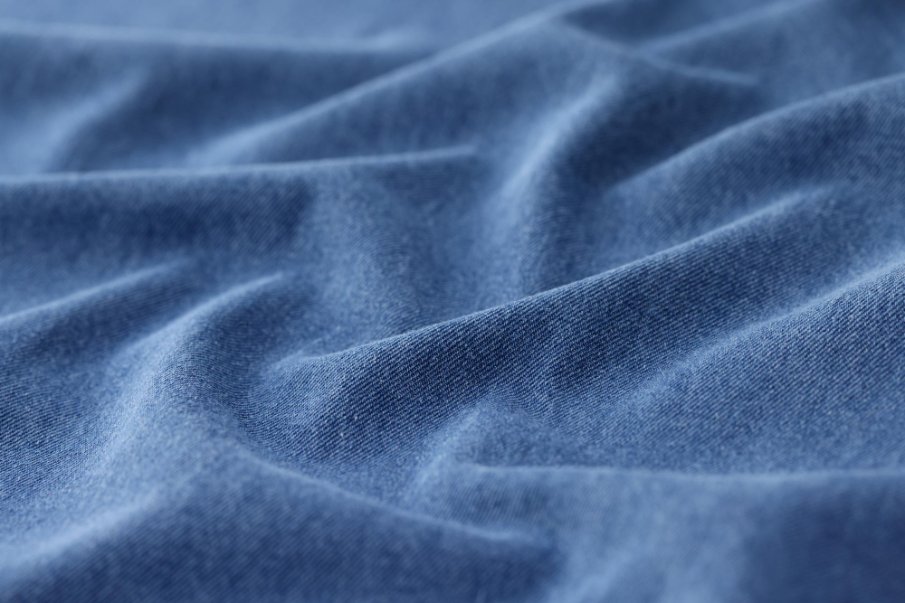
What Does Chambray Fabric Feel Like?
Chambray feels soft and smooth against the skin, with a texture that’s lighter and more refined than denim. The plain weave creates an even surface without the diagonal ridges found in twill fabrics. Fresh chambray has a slight crispness that softens beautifully with each wash, developing a comfortable, lived-in feel.
Physical Properties
Lightweight
3.5-4 oz/yd²
Perfect for shirts, blouses, and summer dresses
Medium Weight
4-5 oz/yd²
Ideal for casual wear, work shirts
Heavy Weight
5+ oz/yd²
Suitable for outerwear, upholstery
Is Chambray Good for Sensitive Skin?
Yes, chambray is generally excellent for sensitive skin due to its smooth plain weave and natural cotton composition. The lack of synthetic fibers and the soft texture minimize irritation. However, those with severe cotton sensitivities should test a small area first.
Chambray vs Other Fabrics
Is Chambray Fabric Similar to Denim?
While chambray and denim share visual similarities, they differ significantly in construction and weight. Understanding these differences helps you choose the right fabric for your needs.
| Feature | Chambray | Denim |
|---|---|---|
| Weave Type | Plain weave (1:1) | Twill weave (3:1) |
| Weight | 3.5-5 oz/yd² | 10-14 oz/yd² |
| Texture | Smooth, soft | Diagonal ridges, sturdy |
| Breathability | Excellent | Limited |
| Best Uses | Shirts, dresses, summer wear | Jeans, jackets, heavy-duty items |
For more details on denim construction, see our complete guide to denim vs jeans.
Is Chambray Similar to Linen?
Chambray and linen share some characteristics but differ in fiber source and behavior. Both are breathable and suitable for warm weather, but chambray offers more structure and wrinkle resistance than linen while maintaining similar comfort levels.
Chambray vs Other Cotton Fabrics
Comparing chambray to other cotton fabric types helps understand its unique position:
- vs Cotton Poplin: Chambray is softer and more casual, while poplin is crisper and more formal
- vs Cotton Lawn: Chambray is heavier and more structured than delicate lawn fabric
- vs Brushed Cotton: Chambray has a smooth surface, while brushed cotton has a soft, fuzzy texture
For comprehensive textile research, the Fashion Institute of Technology’s textile studies program provides extensive academic resources on fabric development and analysis.
Production Process and Manufacturing
Modern chambray production blends traditional techniques with advanced technology to maintain quality while meeting global demand. The process follows this systematic approach:
Chambray Production Process
Traditional vs Modern Techniques
While the core principles remain unchanged, modern manufacturing has revolutionized efficiency and consistency:
| Aspect | Traditional Method | Modern Method |
|---|---|---|
| Loom Operation | Hand-operated, 1 yard/hour | Computer-guided, 15 yards/hour |
| Thread Control | Manual tension adjustments | Laser-guided precision |
| Quality Control | Visual inspection | Automated sensors, 200 checks/second |
| Output Consistency | Natural variations | Uniform patterns |
Final yarns undergo rigorous quality checks before weaving. Tension-controlled looms interlace threads using precise patterns. This ensures the signature breathability and softness consumers expect from premium textiles.
Expert Sewing Guide: Working with Chambray
Learn professional techniques for sewing with chambray fabric, including tips for handling its unique properties and achieving the best results in your projects.
Quality Standards and Certifications
Premium chambray manufacturers follow strict certification standards:
- GOTS (Global Organic Textile Standard): For organic cotton content
- Oeko-Tex Standard 100: Tests for harmful substances
- Better Cotton Initiative (BCI): Promotes sustainable cotton farming
- Global Recycled Standard (GRS): For recycled content verification
Quality and Comfort Benefits
Is Cotton Chambray Breathable?
Yes, cotton chambray excels in breathability due to its plain weave construction. The balanced 1:1 thread pattern creates microscopic gaps that allow 40% more airflow than standard weaves, making it ideal for warm weather and active wear.
✓ Advantages of Chambray
- Excellent breathability and airflow
- Soft, comfortable against skin
- Lightweight yet durable
- Wrinkle-resistant compared to linen
- Versatile styling options
- Improves with washing
- Natural moisture-wicking
- Easy care and maintenance
✗ Considerations
- May shrink if not pre-washed
- Can fade with frequent washing
- Limited stretch compared to blends
- More expensive than basic cotton
- May wrinkle more than synthetics
- Color bleeding possible initially
What are the Benefits of Chambray Fabric?
Chambray offers multiple advantages that make it a preferred choice for many applications:
Performance Metrics
- Moisture Wicking: 25% faster absorption than standard cotton
- Air Permeability: 35 cm³/cm²/s vs 22 cm³/cm²/s for regular weaves
- Drying Time: 50% faster than traditional cotton fabrics
- Pilling Resistance: 4.5/5 rating for quality chambray
Is Chambray Good for Summer?
Chambray is exceptional for summer wear. Its lightweight construction and superior breathability make it ideal for hot weather. The natural cotton fibers wick moisture away from the skin while the plain weave promotes air circulation, keeping you cool and comfortable.
Does Chambray Show Sweat?
High-quality chambray handles sweat better than many fabrics due to its moisture-wicking properties and quick-drying nature. Light-colored chambray shows sweat less than darker shades, and the fabric’s natural breathability helps prevent excessive perspiration.
Complete Care Instructions
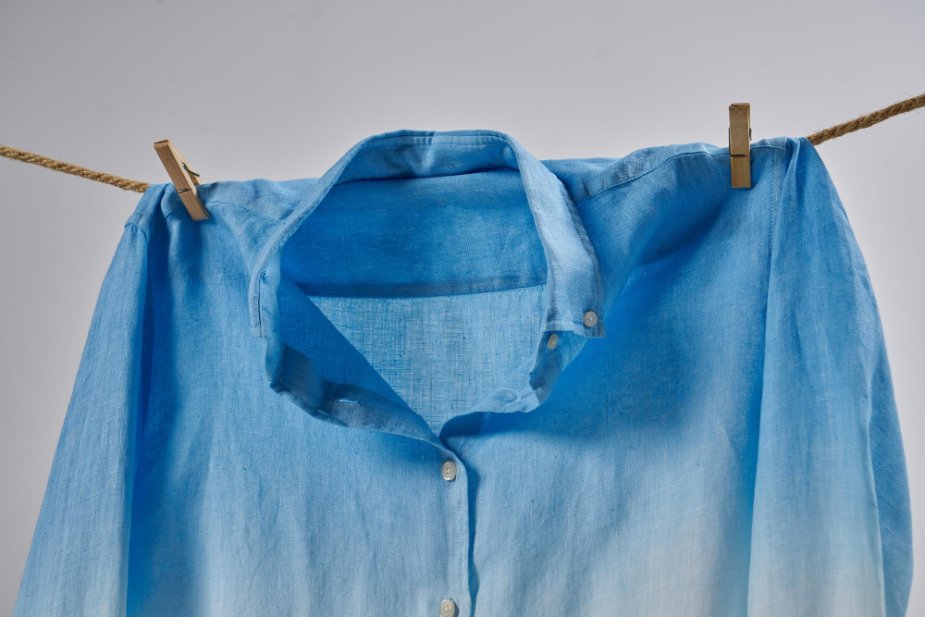
Proper care extends chambray’s lifespan while maintaining its comfort and appearance. Follow these detailed guidelines for best results:
Does Cotton Chambray Shrink?
Yes, 100% cotton chambray can shrink up to 5% when exposed to hot water and high heat drying. Pre-washing fabric and following proper care instructions minimizes shrinkage risk.
Chambray Care Process
Washing Instructions
Essential Washing Tips
- Water Temperature: Always use cold water (30°C/86°F maximum)
- Cycle: Select gentle or delicate cycle to minimize agitation
- Detergent: Use mild, natural detergent without bleach
- Loading: Wash similar colors together, turn garments inside out
Does Chambray Need Ironing?
Chambray benefits from light ironing to achieve a crisp appearance, though it’s less wrinkle-prone than linen. Iron while slightly damp using medium heat (cotton setting) and steam for best results.
How to Keep Chambray from Wrinkling
- Remove from washer promptly after cycle completion
- Hang immediately on padded hangers
- For machine drying, use low heat and remove while slightly damp
- Store on hangers rather than folded when possible
- Use fabric softener sparingly to maintain texture
Drying Best Practices
| Method | Temperature | Benefits | Precautions |
|---|---|---|---|
| Air Drying | Room temperature | No shrinkage, gentle on fibers | Takes longer, weather dependent |
| Machine Dry (Low) | 30-40°C | Faster, convenient | Monitor for over-drying |
| Machine Dry (High) | Not recommended | None | Causes shrinkage and damage |
Fashion and Design Applications
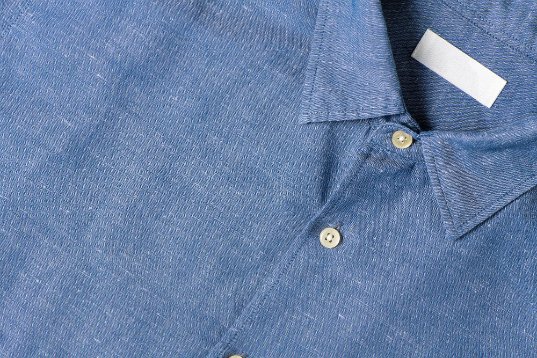
What Season to Wear Chambray?
While chambray shines in spring and summer due to its breathability, it’s versatile enough for year-round wear through strategic layering. Its lightweight nature makes it perfect for warm weather, while its classic aesthetic works in transitional seasons.
Is Chambray Considered a Formal Fabric?
Chambray occupies a unique position between casual and semi-formal. While traditionally associated with workwear, modern interpretations can be dressed up with refined tailoring and styling. It’s not suitable for black-tie events but works well for business casual and smart casual occasions.
Garment Applications
Are Chambray Shirts for Summer?
Yes, chambray shirts are ideal summer garments. Their breathable construction and moisture-wicking properties keep you comfortable in heat, while the classic styling remains timeless and versatile.
| Garment Type | Ideal Weight | Season | Styling Notes |
|---|---|---|---|
| Button-down shirts | 4-5 oz/yd² | Spring/Summer | Roll sleeves for casual look |
| Summer dresses | 3.5-4 oz/yd² | Summer | Flowy silhouettes work best |
| Casual blazers | 5+ oz/yd² | Spring/Fall | Unstructured for comfort |
| Children’s wear | 3.5-4 oz/yd² | Year-round | Soft, comfortable, durable |
Is Chambray Good for Pants?
Chambray can work for pants, particularly in lighter weights for summer trousers or pajama pants. However, its lightweight nature makes it less suitable for structured pants compared to denim or heavier cotton twills.
Home Decor Applications
Is Chambray Good for Bedding?
Chambray makes excellent bedding due to its breathability and softness. It’s particularly suitable for warm climates or hot sleepers who need temperature regulation during sleep.
Is Chambray Good for Sheets?
Yes, chambray sheets offer several advantages:
- Superior breathability compared to percale
- Soft, comfortable texture that improves with washing
- Casual, relaxed aesthetic perfect for modern bedrooms
- Good durability with proper care
- Available in various weights for different preferences
Other home applications include:
- Curtains: Light-filtering while maintaining privacy
- Throw pillows: Add texture and casual elegance
- Table linens: Perfect for informal dining
- Upholstery: Suitable for chairs and light-use furniture
Buying Guide and Quality Tips

Why is Chambray So Expensive?
Quality chambray costs more than basic cotton due to several factors:
- Premium Cotton: Higher-grade cotton fibers increase material costs
- Specialized Weaving: Plain weave requires precision and quality control
- Dyeing Process: Separate warp dyeing adds manufacturing steps
- Brand Positioning: Many chambray products target premium markets
- Small Production Runs: Specialty fabrics have higher per-unit costs
Quality Indicators to Look For
| Quality Factor | What to Look For | Signs of Poor Quality |
|---|---|---|
| Thread Count | 80-120 threads per inch | Very loose or overly tight weave |
| Fiber Quality | Long-staple cotton, even texture | Short fibers, pilling tendency |
| Color Consistency | Even dye penetration | Streaky or blotchy coloring |
| Edge Finish | Clean, secure selvage | Fraying or loose threads |
Price Ranges by Quality Level
Budget Tier
$8-15/yard
Basic cotton, machine-made, limited color options
Mid-Range
$15-30/yard
Good quality cotton, consistent weave, variety of colors
Premium
$30-60/yard
Organic or long-staple cotton, artisanal quality, designer options
What Fabric to Avoid in the Summer?
When choosing summer fabrics, avoid:
- Heavy denim: Traps heat and lacks breathability
- Synthetic blends with high polyester: Don’t breathe well
- Thick knits: Too warm for hot weather
- Non-breathable treatments: Water-repellent coatings block airflow
Chambray’s breathability makes it an excellent summer alternative to these heavier fabrics.
Environmental Impact and Sustainability
Understanding chambray’s environmental impact helps make informed purchasing decisions. The sustainability of chambray depends largely on cotton sourcing and manufacturing practices.
Organic vs Conventional Chambray
| Aspect | Organic Chambray | Conventional Chambray |
|---|---|---|
| Pesticide Use | None | Standard agricultural chemicals |
| Water Usage | Often lower due to better soil health | Standard irrigation requirements |
| Soil Impact | Improves soil health over time | May degrade soil quality |
| Price Premium | 20-40% higher | Standard market pricing |
| Certification | GOTS, USDA Organic | Various quality standards |
Eco-Friendly Manufacturing Practices
- Water Recycling: Modern mills recycle up to 90% of process water
- Low-Impact Dyes: Plant-based and non-toxic dyeing methods
- Energy Efficiency: Solar and renewable energy in production
- Waste Reduction: Recycling cotton waste into new products
- Fair Trade: Ethical labor practices throughout supply chain
Sustainability Tip
Chambray’s durability and timeless style make it a sustainable choice. One high-quality chambray shirt can last 5-10 years with proper care, making it more environmentally friendly than fast fashion alternatives.
Troubleshooting Common Issues
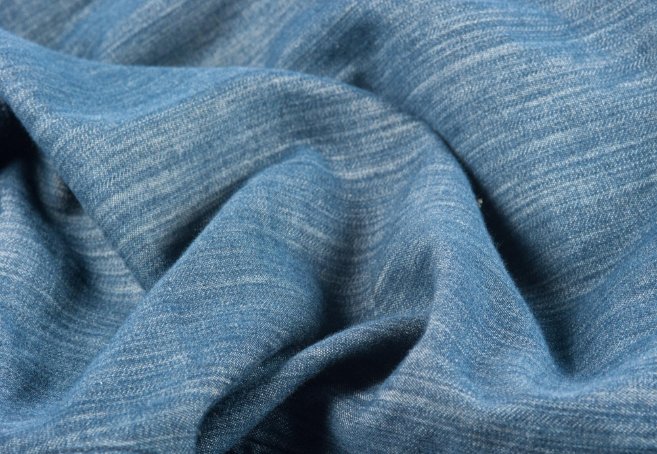
Does Chambray Stretch?
Pure cotton chambray has minimal stretch naturally. Some modern chambray includes 2-5% elastane or spandex for added comfort and movement, but traditional 100% cotton chambray relies on the loose plain weave for flexibility.
Is Chambray Fabric Heavy?
No, chambray is specifically designed to be lightweight. At 3.5-5 oz/yd², it’s significantly lighter than denim (10-14 oz/yd²) and comparable to other lightweight cotton fabrics like muslin cotton.
Does Chambray Fabric Wrinkle Easily?
Chambray wrinkles moderately – more than synthetic blends but less than linen or cotton lawn. The plain weave structure provides some wrinkle resistance, and any creases typically relax with wear or light steaming.
Common Problems and Solutions
Shrinkage Prevention
- Pre-wash fabric before sewing projects
- Use cold water (30°C maximum) for all washes
- Air dry or use low heat settings only
- Remove promptly from dryer to prevent over-drying
Color Fading Solutions
- Wash inside out to protect the face of the fabric
- Use color-protecting detergent for the first few washes
- Avoid direct sunlight when line drying
- Separate dark and light colors initially
Pilling Prevention
- Choose higher thread count chambray for better quality
- Avoid washing with rough fabrics like terry cloth
- Use fabric softener sparingly to maintain fiber strength
- Turn garments inside out before washing
How to Tell if a Shirt is Chambray
Identify chambray shirts by these characteristics:
- Visual: Light blue color with white threads visible in the weave
- Feel: Soft, lightweight texture that’s smoother than denim
- Weight: Notably lighter than jeans fabric
- Pattern: Plain weave visible under magnification (over-under-over-under)
- Reverse side: Similar color to the front (unlike denim)
Frequently Asked Questions
Conclusion
Chambray cotton stands as a testament to textile innovation, bridging the gap between casual comfort and refined style. This comprehensive guide has explored every aspect of this versatile fabric, from its historical origins in medieval France to its modern applications in sustainable fashion.
Key Takeaways
Essential Points to Remember:
- Breathability: Chambray’s plain weave provides 40% better airflow than standard cotton weaves
- Versatility: Suitable for clothing, home decor, and year-round wear with proper styling
- Care: Cold water washing and air drying preserve quality and prevent shrinkage
- Quality: Look for 80-120 thread count and even dye penetration when purchasing
- Sustainability: Choose organic or certified options for environmental responsibility
Recommendations
For Summer Wear: Chambray is unmatched for hot weather clothing. Its moisture-wicking properties and lightweight feel make it ideal for shirts, dresses, and casual wear.
For Home Decor: Consider chambray for bedding, curtains, and upholstery where breathability and casual elegance are desired.
For Sewing Projects: Pre-wash all chambray fabric and use appropriate sewing techniques for natural fibers. Consider our easy sewing projects to start your chambray journey.
For Investment Pieces: Quality chambray justifies its higher price through durability and timeless appeal. A well-made chambray shirt can serve you for decades with proper care.
Whether you’re drawn to chambray’s practical benefits or its aesthetic appeal, understanding its properties helps you make informed decisions about incorporating this exceptional fabric into your wardrobe and home. Its combination of comfort, style, and sustainability makes chambray a smart choice for conscious consumers seeking quality textiles.
The future of chambray looks bright as manufacturers continue improving sustainability practices while maintaining the quality that has made this fabric a favorite for over two centuries. By choosing chambray, you’re investing in a textile tradition that values both function and timeless style.

